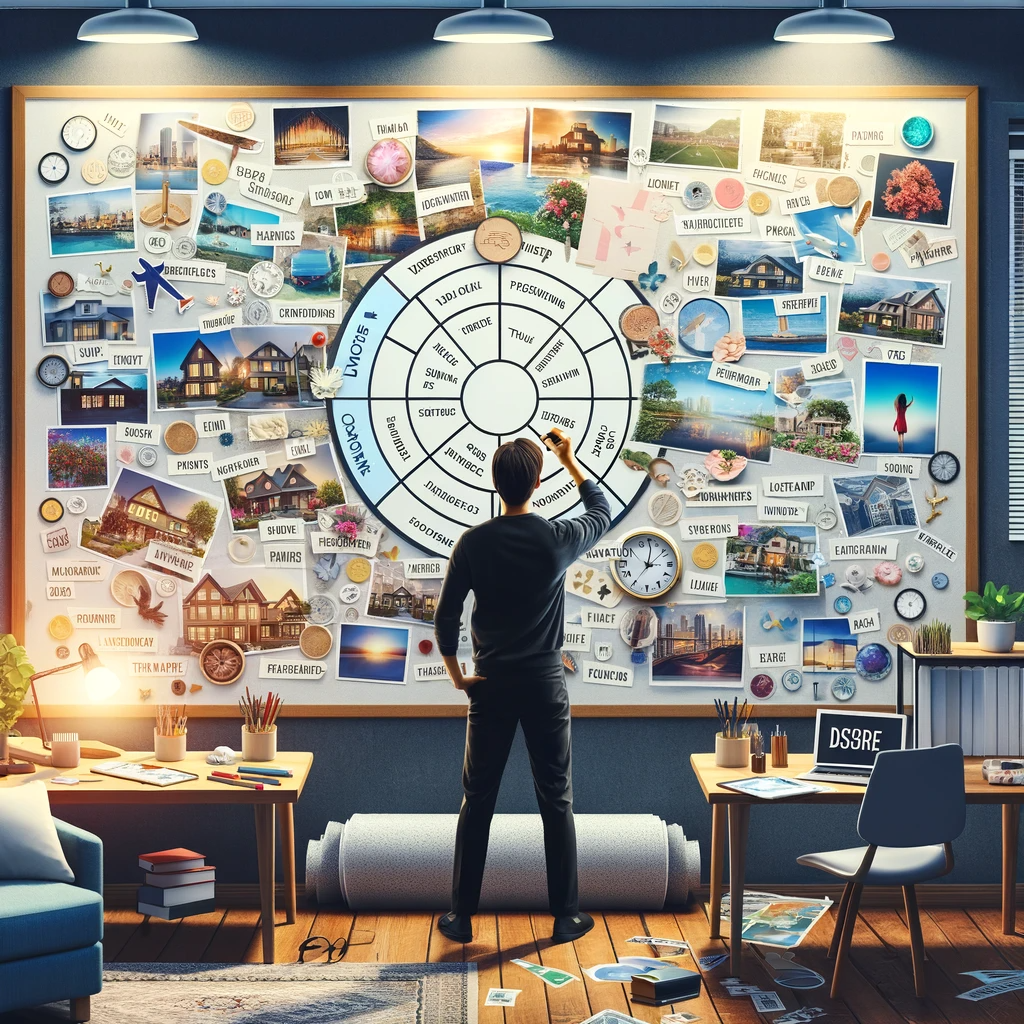Visualization Techniques for Manifestation: Crafting Your Dream Life

Visualization is a powerful tool that can help you manifest your goals and desires. By clearly picturing your ideal life in your mind, you can begin to make it a reality. Visualization works by activating the creative energies of your subconscious mind. When you visualize, you are sending a direct message to the universe about what you want to create.
Consistent visualization reinforces your intentions and desires. Over time, your subconscious and energetic vibration aligns with what you are picturing. This attracts matching circumstances and opportunities into your life. Mastering visualization techniques takes practice, but can be deeply rewarding.

Why Visualization Works
Visualization taps into the power of your subconscious mind. According to psychology, the subconscious accounts for 90% or more of your mental activity. It controls your beliefs, habits, behaviors, and drives your creativity.
When you visualize, you impress desired images onto your subconscious. This sends instructions for what you want to manifest. As you reinforce the same images, your subconscious can help align your outer world. Visual cues also activate the Law of Attraction. Focusing intently on your desires emits a matching energetic vibration. This vibration then draws in related opportunities and resources.
Tips for Effective Visualization
Follow these tips to get the most out of your visualization practice:
- Set clear goals. Be as specific as possible about what you want to manifest. Define details like locations, people involved, sights, sounds, feelings, etc.
- Make it realistic. Visualize scenarios that are genuinely possible for you to achieve. This gives your subconscious clear, believable images to work towards.
- Engage all your senses. The more sensory details you can add, the more real your scene will feel. Notice smells, textures, tastes, sounds, colors, etc.
- Add emotional elements. Feel what it would be like to achieve this goal. Get into the excited, accomplished emotional state you would have.
- Reinforce with repetition. Spend at least 5-10 minutes daily visualizing. Repeat the same vivid scenes consistently.
- Let go of attachment. Visualize for the joy of it, not because you “need” a certain outcome. This reduces desperation energy.
- Act as if now. After visualizing, look for opportunities consistent with your vision. Act and feel as if you’re already living your vision.

Creative Visualization Techniques and Exercises
Here are some creative techniques and exercises to boost your visualization skills:
1. The Mind Movie Method
This involves scripting out your vision like a movie, then running through it vividly in your mind. Write out a short story of you having achieved your desires. Include as many sensory details and emotions as possible. Add in affirmations that support your goals. Then read through this script slowly while visualizing it intensely.
2. The Treasure Map
This combines visualization with physical creations. Get a large poster board and fill it with cut out pictures, phrases, drawings, and more representing your vision. Cut words from magazines, print out pictures that resonate, draw symbols, add motivational quotes, etc. Place it where you will see it often to reinforce your goals.
3. Vision Boards
Vision boards condense your goals and desires onto a single page. Look through magazines and catalogs for pictures or words that symbolize your vision. Collage these onto a board. You can also draw, add photos, or print out goal pictures. Place your finished vision board somewhere visible, review it daily, and visualize the images coming true.
4. The Mental Theater
Sit relaxed with eyes closed. Imagine you are sitting in an empty movie theater waiting for your vision to appear onscreen. Narrate your vision like a story. Visualize the scenes in vivid color, texture, and sound. Imagine watching yourself live out this vision. Feel your emotions watching it unfold.
5. The Fake Mirror Technique
Hang up a large mirror or stand in front of a mirror. Relax and visualize your ideal self in the reflection – your dream body, new home, car, relationship, etc. See yourself already having achieved your goals. Focus on how different, accomplished, happy you look. Smile, move, and observe details. This tricks your subconscious into “seeing” your vision as reality.
6. The Future Self Visualization
Envision yourself having already achieved your biggest goals and dreams. Picture your ideal future life 1, 5, or 10 years from now. Visualize future you relaxed, confident, and fulfilled. Notice how you look, where you live, who you are with, and the positive emotions you feel having succeeded. Affirm that your powerful future self will guide you to this vision.

Troubleshooting Visualization Difficulties
You may encounter challenges like distracting thoughts or unclear visions when first practicing. Try these troubleshooting tips:
Issue: Too many intrusive thoughts.
Solution: Designate visualization time as “thought-free time.” Acknowledge fleeting thoughts, then gently return focus to the visualization.
Issue: Images feel unclear or disjointed.
Solution: Spend more time scripting out details first. Add more sensory description like colors, textures, and feelings. Say affirmations aloud to reinforce the images.
Issue: Hard to feel natural emotions.
Solution: Try invoking the emotions of a past success first. Then transfer those emotions over to your visualization. Also check for self-sabotaging doubts blocking emotions.
Issue: Mind wanders or feels too active.
Solution: Relax body first with deep breathing, meditation, or yoga before visualizing. Cut back on stimulants beforehand as well.
Issue: Vision seems unrealistic or unattainable.
Solution: Break your vision down into smaller, believable steps. Visualize the next immediate steps versus huge leaps. Build your visualization skills slowly.

Frequently Asked Questions
Q: How often should I visualize?
A: Aim for 5-10 minutes daily at minimum. Twice daily sessions are ideal for faster results. You can visualize anywhere, anytime – morning, before bed, during breaks, etc.
Q: When will my visualizations manifest?
A: This depends on the clarity of your visions, and the consistency/intensity of your practice. Give it 30-90 days of daily sessions. Remain patient, detached from timelines, and open to flow. Manifestation is process, not a single event.
Q: Can I visualize for other people?
A: Yes, you can visualize desired outcomes, healing, or abundance for others. Though ultimately they must be open and aligned to receiving it. Visualize their highest good while respecting their path.
Q: What if my mind goes blank during visualization?
A: Blank moments are normal, just gently return focus to the visualization. You can also try describing scenes aloud first to engage your senses. Or precede visualization with meditation to calm the mind.
Q: Do my visualizations need to be realistic?
A: Visualizing achievable scenes boosts belief and clarity. But you can visualize “impossible” desires to open up creativity and shift limiting beliefs. Explore all possible realities.
In summary, visualization is a simple yet powerful tool available to anyone seeking growth and change. With consistent practice, it can help unlock your subconscious potential and manifest your heart’s desires. Approach visualization sessions playfully rather than out of intense necessity. The more lightness and sensory joy you bring, the more benefits you will reap.
